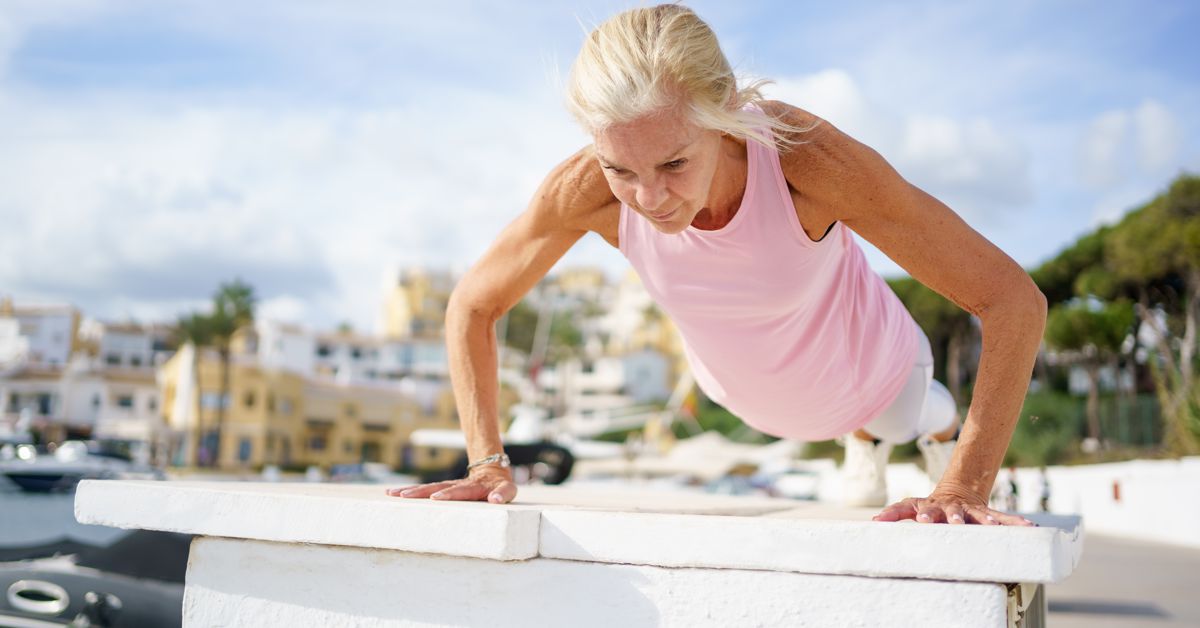A push exercise is any type of exercise that involves pushing or pressing against a resistance in order to move it.
These exercises typically involve the use of the muscles in the arms, shoulders, and chest, as well as the muscles in the back and core.
Push exercises are an important component of any fitness routine because they help to strengthen and develop these muscle groups, which are essential for activities such as lifting, pushing, and pulling.
There are many different muscles that work during pushing exercises, including the pectoralis major and minor (chest), the deltoids (shoulders), the triceps (arms), and the latissimus dorsi (back).
These muscles work together to provide the force needed to push against the resistance.
In addition to these primary muscles, the muscles in the core and lower body, such as the abs, glutes, and legs, also play a role in providing stability and support during pushing exercises.
There are many different pushing exercises to choose from, and the best ones for you will depend on your fitness goals, experience level, and the equipment you have available.
Best Push exercises
Bench press: This classic exercise involves lying on a flat bench and pressing a barbell or dumbbells away from your chest. It targets the chest, shoulders, and triceps.
Push-ups: This bodyweight exercise involves placing your hands on the ground and lifting your body off the ground using the muscles in your arms, shoulders, and chest. It's a great exercise for building upper body strength and can be modified to suit different fitness levels.
Dips: This exercise involves using parallel bars or a dip station to lower and raise your body using your arms and shoulders. It targets the triceps, chest, and shoulders.
Shoulder press: This exercise involves pressing a barbell, dumbbells, or a resistance band overhead using your shoulders and arms. It targets the shoulders and triceps.
Lateral raises: This is a type of push exercise that targets the muscles in the shoulders, specifically the lateral (side) head of the deltoid muscle.
Incline press: This exercise involves lying on an incline bench and pressing a barbell or dumbbells away from your chest. It targets the upper chest and shoulders.
Tricep extensions: also known as tricep kickbacks or tricep extensions with dumbbells, are a type of push exercise that targets the triceps muscles in the arms.
Close grip bench press: This exercise is similar to the bench press, but with a closer grip on the barbell or dumbbells. It targets the triceps and chest.
In addition to building strength and muscle, there are many other benefits to including push exercises in your fitness routine.
Benefits of pushing exercises
- Improved upper body strength: Push exercises help to build and strengthen the muscles in the arms, shoulders, and chest, which can improve your overall upper body strength and power.
- Improved posture: Stronger upper body muscles can help to improve your posture by providing support for your spine and shoulders. This can help to reduce the risk of back pain and other issues related to poor posture.
- Increased bone density: Weight-bearing exercises such as push-ups and bench press can help to increase bone density, which can reduce the risk of osteoporosis and other bone-related issues.
- Improved athletic performance: Push exercises can help to improve your strength and power, which can enhance your performance in activities such as sports and weightlifting.
- Improved cardiovascular endurance: While push exercises primarily target the upper body muscles, they can also provide a cardiovascular challenge when performed at a high intensity. This can help to improve your cardiovascular endurance and overall cardiovascular health.
- Improved grip strength: Many push exercises, such as the bench press and push press, require you to grip the weights or barbell firmly in order to lift them. This can help to improve your grip strength, which can be beneficial in activities such as rock climbing and weightlifting.
- Improved flexibility: Some push exercises, such as the shoulder press, can help to improve the range of motion in your shoulders, which can help to increase flexibility and reduce the risk of injury.
- Improved coordination and balance: Many push exercises, such as the medicine ball push-ups, require a combination of coordination and balance in order to maintain proper form. This can help to improve these skills, which can be beneficial in activities such as sports and dance.
- Improved mental health: Exercise, including push exercises, has been shown to have a positive impact on mental health. It can reduce stress, improve mood, and boost self-esteem.
Conclusion
Incorporating push exercises into your fitness routine can help to improve your strength, posture, and overall physical and mental well-being.
It's important to choose exercises that are appropriate for your fitness level and to use proper form and technique to minimize the risk of injury.
Consider seeking guidance from a qualified fitness professional to ensure that you are performing push exercises safely and effectively.

Leave A Comment